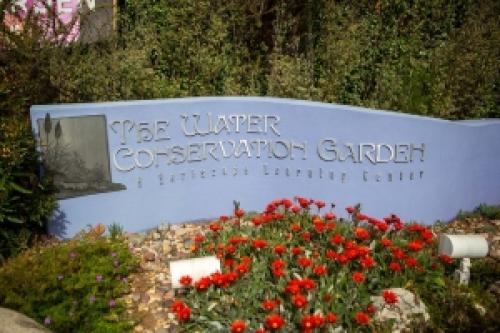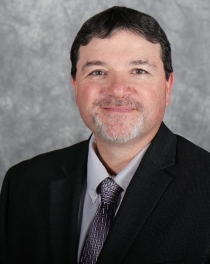
“It could happen, at any water system in the United States. The systems were not designed for what we what we witnessed in L.A.,” says Helix Water District general manager Brian Olney, though Helix has taken steps to reduce risk
By Karen Pearlman
March 20, 2025 (La Mesa) -- The city of La Mesa is being proactive on educating residents on emergency situations for water needs in case of out-of-control wildfires such as the January blazes that devastated Los Angeles County. Concerns about fires and lack of water to fight them led to elected officials in the city of La Mesa to have Helix Water District share insight and information about protection in a presentation at the March 11 City Council meeting.
Reports are still coming in, but the fires earlier this year in Los Angeles are thought to have caused an estimated $250 billion in total damages, with more than 18,000 homes and structures destroyed. While the fires were aided by drought conditions, low humidity, a buildup of vegetation and hurricane-like winds, part of the equation also included local infrastructure issues, troubles tapping into water, and empty fire hydrants and reservoirs.
 “I know there’s been a lot of confusion after the fires and a lot of questions about what goes on,” said Helix Water District General Manager Brian Olney (photo, right). “Are we prepared? Yes, we’re prepared for what we know can happen.” He added, “The events in in Los Angeles obviously really put some visuals and some things into our minds about what really happens in a water system, and ‘Can that happen here with us?’ I think it opens us up to have really healthy discussions about ‘What are the expectations?’ and ‘What can a water system survive?’”
“I know there’s been a lot of confusion after the fires and a lot of questions about what goes on,” said Helix Water District General Manager Brian Olney (photo, right). “Are we prepared? Yes, we’re prepared for what we know can happen.” He added, “The events in in Los Angeles obviously really put some visuals and some things into our minds about what really happens in a water system, and ‘Can that happen here with us?’ I think it opens us up to have really healthy discussions about ‘What are the expectations?’ and ‘What can a water system survive?’”
Olney explained that fire hydrants can run out of water during high demand. He said while the systems are designed to meet current standards, urban wildfires’ demands “far exceeds whatever was expected or possibly anticipated in terms of the design of that system.”
Most urban water systems are not designed to fight wildfires, he said. Urban water systems are designed to meet normal and peak demands, and provide water to fight fires for two to four hours.
He said when several fire trucks are hooked up to a fire hydrant to put out fires at several homes, the system can manage that for multiple hours at a time, “but when you have 50 fire hydrants that run into a neighborhood and they’re hitting every fire hydrant in place, there’s no chance that there will be enough water left in that system.”
Olney said some homeowners who leave their homes during a fire turn on their irrigation systems, putting added demand onto the system, overwhelming and outpacing the pumping capacity designed into the systems.
“So could this happen in La Mesa?” Olney asked. “Yes, it could. It could happen, at any water system in the United States. The systems were not designed for what we what we witnessed in L.A.”
 La Mesa City Councilmember Patricia Dillard (photo, right) asked Olney about protection needs, especially concerning some of the more hilly areas of the city.
La Mesa City Councilmember Patricia Dillard (photo, right) asked Olney about protection needs, especially concerning some of the more hilly areas of the city.
“We definitely have the capacity to go out and we can turn valves, we can isolate systems, we can turn water off in an area that doesn’t need the water, and kind of focus it,” Olney said. “We can isolate certain things, but we currently don’t have technology installed in our system where we can shut off an individual house in that area and not to have all the water just go to the to the fire hydrants. “There is some technology that exists out there that does allow you to shut off individual homes, but it’s quite expensive and so we’re not quite down that path yet.”
Olney said the district is in touch with local fire chiefs from Heartland Fire, Lakeside Fire Protection and San Miguel Fire districts. “We’re not only working them on a daily basis to let them know what we’re doing in our system, where we’re taking things out of service so they would have kind of reduced flow, but we’re also working with them on ideas,” Olney said. ‘How do we improve the communication?’ ‘What information do they need moving forward to help these types of responses?’”
He said the fire districts are aware that Helix can provide data in real time of where there might be issues in the water system, and can direct them to another part of the system that has capacity to help them plan on what resources they need.
“We absolutely can have crews out in the field and we can manipulate areas of the system to kind of redirect water where we need it so that it is there,” he said, adding that the Helix crews and firefighters can open and close the 16,000 valves and 6,600 hydrants in Helix’s water distribution system.
While Helix Water District hasn’t been tested in fight major wildfires, other water agencies in San Diego County have. Several faced issues in losing portions of their water system, running out of water during the major wildfires that hit the region in 2003 and 2007.
As part of its strategy to keep that from happening, Helix “has shared resources agreements with all the municipalities and water agencies so we can share people, equipment, emergency response mechanisms,” Olney told the Council.
He said Helix has a direct link to San Diego Gas & Electric, and also stays ahead of things like power outages. Its system can be backed up and run either through stationary or mobile power generation systems. The district has installed diesel-powered, backup generators at critical sites.
 City Council member Laura Lothian (photo, right) said she thought one of the most shocking stories from the L.A. fires was the empty Santa Ynez Reservoir, a 117-million-gallon water resource near Pacific Palisades that was under renovation and empty when the fires ripped through the region.
City Council member Laura Lothian (photo, right) said she thought one of the most shocking stories from the L.A. fires was the empty Santa Ynez Reservoir, a 117-million-gallon water resource near Pacific Palisades that was under renovation and empty when the fires ripped through the region.
She asked about the amount of water that would be available at Lake Jennings and Olney said the district keeps 75 days’ worth at minimum. He said that currently the reservoir is holding about 130 days’ worth of water.
“We’re not going to run out of water in terms of putting water into the system,” he said. “All the water in there is what we’ve purchased to put in there so it’s completely manipulated and managed by the district itself.”
The district has invested and continues to invest in diverse, reliable water supplies to ensure that the region has the water it needs. Its water comes primarily from the Colorado River and the state water project in Northern California as well as Lake Jennings, the El Capitan Reservoir and Lake Cuyamaca. Its water suppliers also include the Carlsbad Desalination Plant and the Emergency Storage and Carryover Project.
 Helix Water District is the second largest water utility in the county, serving more than 275,000 people in La Mesa, Lemon Grove, El Cajon and other areas in the county.
Helix Water District is the second largest water utility in the county, serving more than 275,000 people in La Mesa, Lemon Grove, El Cajon and other areas in the county.
